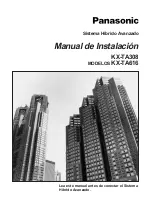
26
EN
The switching distance is then automatically set to a distance which is slightly greater than the clearance
between the sensor and the object. The sensor is thus switched for all objects whose distance to the sensor
is equal to or less than the distance to the object used for the teach-in procedure.
Sensor
Object
Switching Point
Teach-in distance
• Change switching point: Shifts the switching point to the entered distance. In the case of foreground
teach-in this is the teach-in distance described above, and in the case of window teach-in it’s the distance
to the middle of the window.
• Hysteresis: Describes the distance between the switch-on and switch-off points. Due to the highly stable
measured values provided by this range of sensors, hysteresis can be set very low – even down to
0.000 mm. This setting may be advisable in certain applications where an average filter is used.
• Switching reserve: Clearance between the teach-in distance and the sensor’s switching point. Switching
reserve ensures reliable object detection even in the case of slightly fluctuating distances between the
objects and the sensor.
• Window size: see window “teach-in”.
2 mA input load:
Input load is set to 2 mA as a default value, but it can be switched off in the dropdown menu (e.g. if the PLC
has a high-impedance PNP output).
Input setting:
Operating voltage active: Pending tasks are executed when input voltage is on.
Operating voltage inactive: Pending tasks are executed when input voltage is off.
10. Maintenance Instructions
• This wenglor sensor is maintenance-free.
• It is advisable to clean the lens and the display, and to check the plug connections at regular intervals.
• Do not clean with solvents or cleansers which could damage the product.
11. Proper Disposal
wenglor sensoric GmbH does not accept the return of unusable or irreparable products. Respectively valid
national waste disposal regulations apply to product disposal.
Subject to change without notice


































